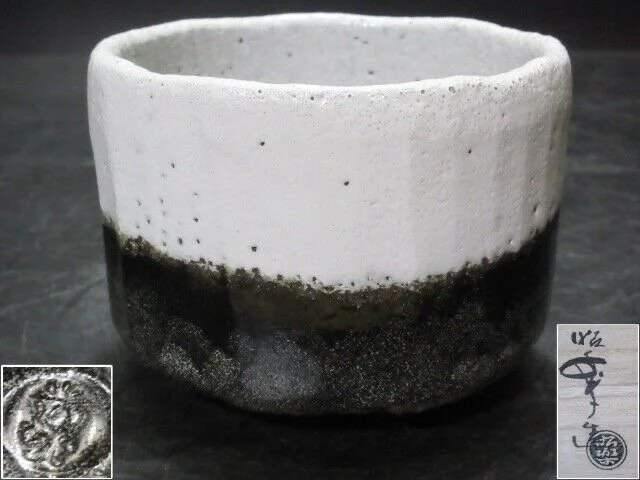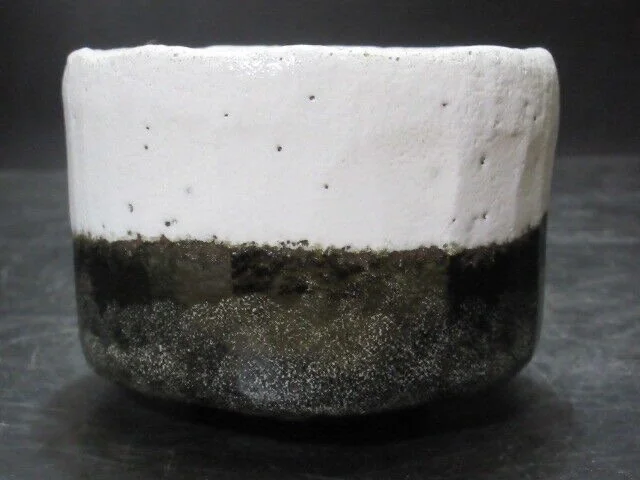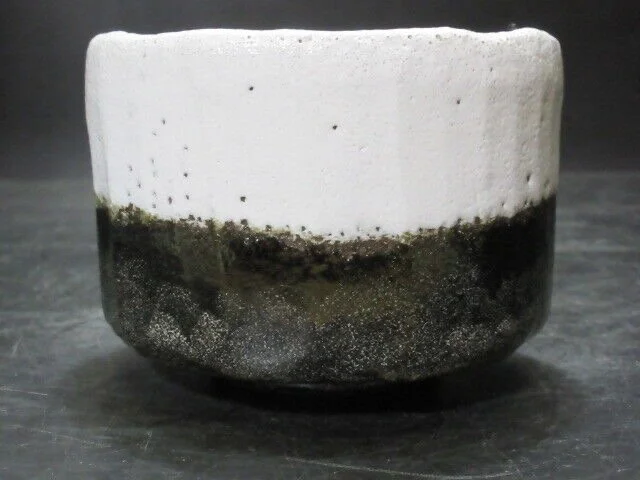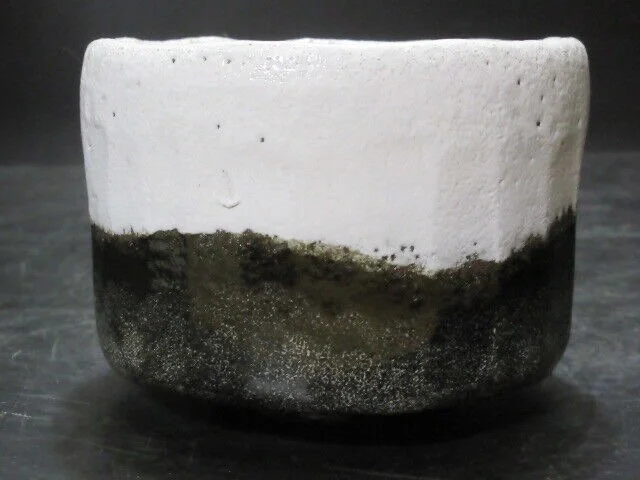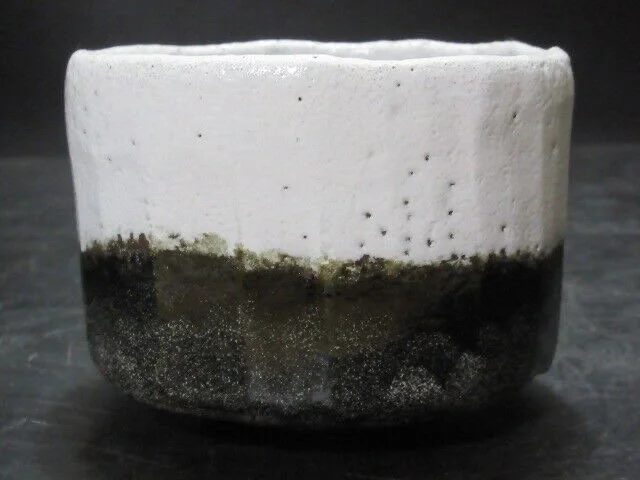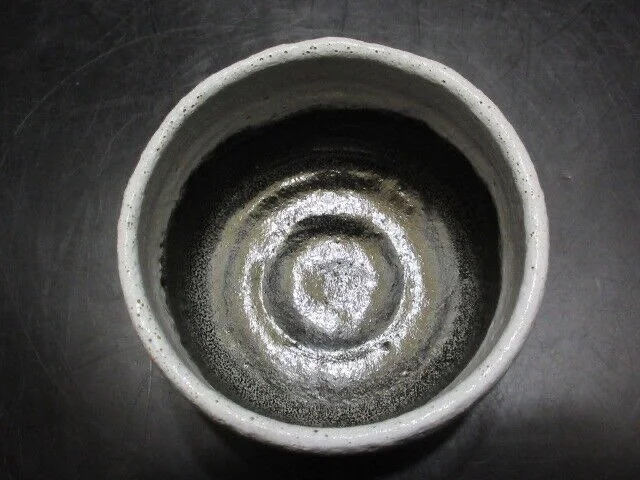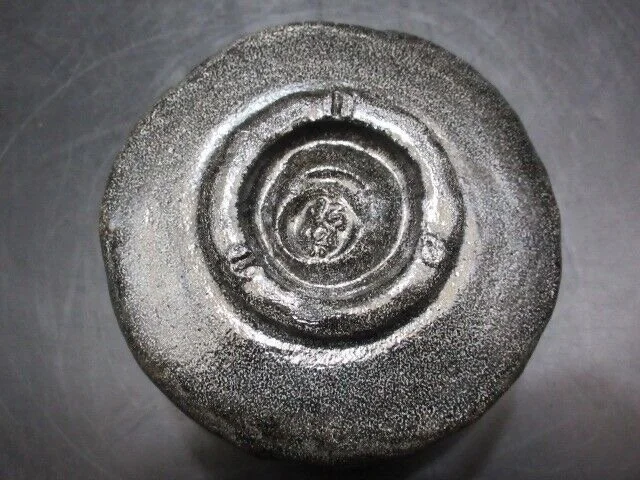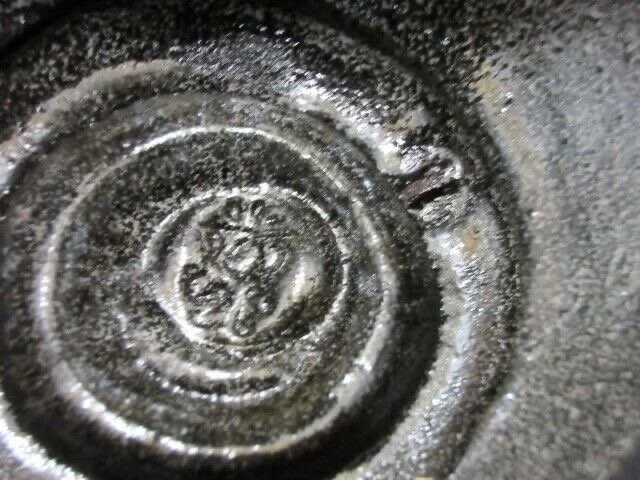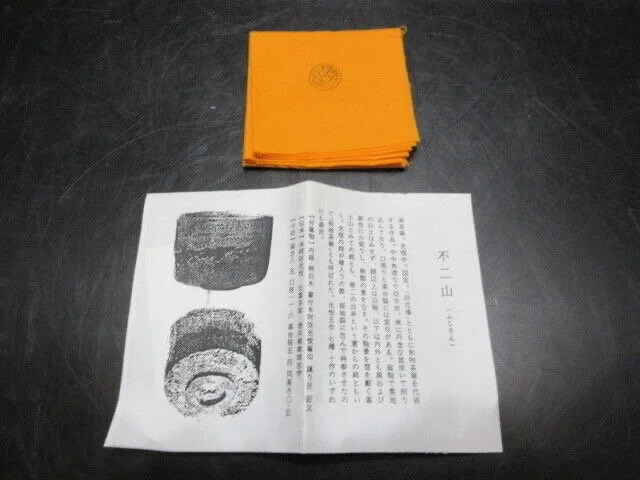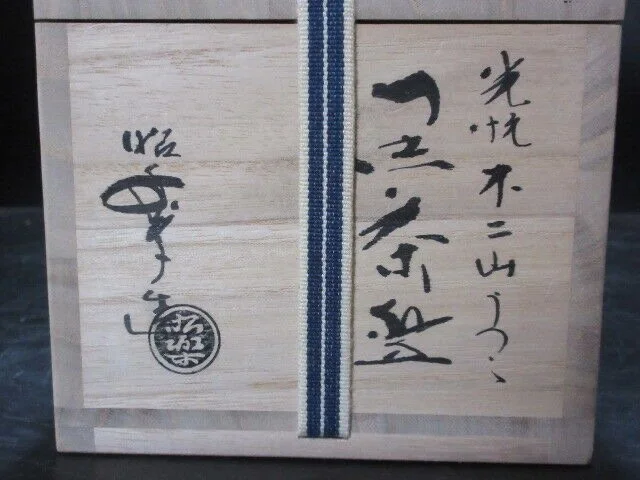Japanese Koetsu Yama Fuji Mountain Raku Black Tea Bowl Shoraku Saki Box Utsushi
Japanese Koetsu Yama Fuji Mountain Raku Black Tea Bowl Shoraku Saki Box Utsushi
Chawan Kōetsu Utsushi Fujisan
(Copy of Kōetsu's Fuji Tea Bowl)
This is a masterpiece of Japanese ceramic art made in Kyoto by Shoraku Saki the 3rd (Shoraku Sasaki 3rd who is the most popular Raku-yaki potter lives in Kyoto), after the original bowl by Hon'ami Koetsu (1558 – 1637), with the original signed box and papers. It is very hard to find, and when available, it sells out quickly.
This Japanese 'Honami Koetsu' style 'Yama' (mountain) bowl is an 'Utsushi' (copy) black-and-white ceremonial chawan (tea bowl), hand-made by master Japanese ceramicist Shoraku Saki with a top-quality custom-made and signed kotatsu kiribako (wooden storage box). This is an Atsushi/mozo, a new work of art inspired by a national treasure.
The unusual white raku (raku-yaki) tea bowl Fuji-san (Mount Fuji) by Honami Kōetsu in the Edo period (17th century) is an official Japanese National Treasure and is held at the Sunritz Hattori Museum of Arts in Suwa, Nagano.
Dimensions: 12 cm diameter, 8.5 cm height. Total weight: 0.73 kg.
The chawan is a duplicate of the famous Shiro Raku Fujisan tea bowl made by Hon'ami Kōetsu in the 17th century (Edo period). The original is now displayed in the Sunritsu Hattori Museum, and it is one of the few matcha bowls that were designated as a Japanese National Treasure. As the legend goes the bowl was made to resemble the iconic snow covered Mt. Fuji. Whether it is true or not, before the firing, the finish is impossible to predict, and this randomness makes every single piece one of a kind.
Hon'ami Kōetsu (Japanese: 本阿弥 光悦; 1558 – 27 February 1637) was a Japanese calligrapher, craftsman, lacquerer, potter, landscape gardener, connoisseur of swords and a devotee of the tea ceremony. His works are generally considered to have inspired the founding of the Rinpa school of painting. Robert Hughes of Time Asia wrote that in Japan, Kōetsu is "a national treasure several times over, about as famous there as Benvenuto Cellini is in the West", even though in the United States he is "scarcely known".
Raku ware (楽焼, raku-yaki) is a type of Japanese pottery traditionally used in Japanese tea ceremonies, most often in the form of chawan tea bowls. It is traditionally characterised by being hand-shaped rather than thrown, fairly porous vessels, which result from low firing temperatures, lead glazes and the removal of pieces from the kiln while still glowing hot. In the traditional Japanese process, the fired raku piece is removed from the hot kiln and is allowed to cool in the open air.
The Japanese term, Utsushi (写), can be translated as appropriation, emulation, inspiration, attribution, etc. However, the word Utsushi encompasses the meanings found in all the terms mentioned. An Utsushi can be a work where an artist is inspired by a traditional motif and incorporates the design in a work of art or the artist is emulating a masterpiece of the past to surpass the original subtly. In Japan today, the meaning found in the term Utsushi is slowly fading and being misinterpreted or wrongly associated with the term, mozo (模造) which means to copy or reproduce. Utsushi is simply not copying or reproducing a masterpiece or motif from the past. Instead, Utsushi promotes a dialogue between the artist and the masters of the past, connecting past, present, and future.

